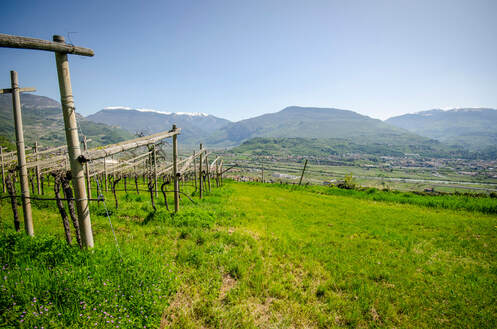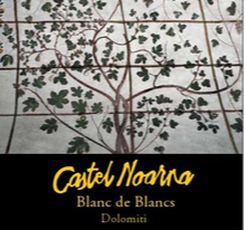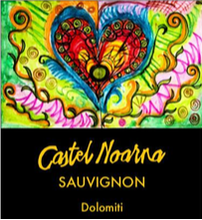Castel Noarna, Marco Zani, Rovereto
Appellation:Dolomiti Varieties: Nosiola, Teroldego, Merlot, Salvanel, Sauvignon Blanc, Chardonnay, Lagrein
Viticulture: Organic (ICEA)
Size: 7 hectares
Production: 2,000 to 2,500 cases annual
Terroir: Limestone, quartz, and silt
Viticulture: Organic (ICEA)
Size: 7 hectares
Production: 2,000 to 2,500 cases annual
Terroir: Limestone, quartz, and silt
Marco Zani is one of the newer additions to the Selection Massale portfolio, but he already feels very much part of the family. The family domaine was put together by his father, who bought the castle (yep, there really is one, and Marco makes his wine with in its 10th Century cellars) and surrounding vineyards, which are situated on the lower slopes of the mountains that tower either side of the little town of Rovereto. Although his father was not a vigneron (like most growers in the village, he sold each years' crop to the cooperative), Marco knew from an early age that he wanted to make wine, and since 1989, Marco has been (fanatically) tending the vineyards and making the wine at Castel Noarna, as well as helping his wife to run the best hotel/restaurant in town.
The castle and the vineyards lie on east/southeast facing slopes at about 350 meters above sea level -- these are high alititude vineyards, similar to those of Belluard in the Haute-Savoie, and Knauss and Beurer in Swabia. The soils, which Marco has worked organically since 2008 are rich in minerals and poor in organic matter, and exactly what's needed for making of grands vins. Limestone, our favorite, quartz, slate, silt.
The castle and the vineyards lie on east/southeast facing slopes at about 350 meters above sea level -- these are high alititude vineyards, similar to those of Belluard in the Haute-Savoie, and Knauss and Beurer in Swabia. The soils, which Marco has worked organically since 2008 are rich in minerals and poor in organic matter, and exactly what's needed for making of grands vins. Limestone, our favorite, quartz, slate, silt.
WINES
|
Rethium is a natural sparkling white wine, refermented in the bottle composed of Nosiola, Chardonnay and Sauvignon blanc. A zippy, petnat with tart lemon fruit and a delightful yeasty quality.
|
The sparkling Blanc de Blancs is made from Chardonnay vines trained in high arches ("Pergola"), a training system that is distinctive of the region, and which seem to bring more phenolic character to the wines. It is vinified as a methode champenoise, but wit no dosage. It is simply the best "Southern Swabian" sparkling wine we have ever tasted.
|
Nosiola is an indigenous white grape vinified on the skins for a 3/4 days (no orange wine here). Fermentation and aging take place in stainless steel. Marco wants the Nosiola to taste like the wines made in the region a hundred years ago. About 3,000 bottles are produced every year
|
|
Sauvignon: Planted in 1986 (pergola) and in 1991 (row) this is a newer cuvee by Castel Noarna. Fermentation takes place in stainless steel and then is more to used barrel until the Spring for bottling. Malo is not controlled and typically is carried out for a rounded expression of the Sauvignon Blanc.
|
Cimber: The Lagrein (into which a small amount of Teroldego is usually blended) is a lovely, medium bodied vin de soif. Thanks to Marco's gentle vineyard and cellar practices, it lacks the blockiness that often afflicts this variety, and reveals the softer side of the grape, with lilting, savory flavors and a nice, sappy texture.
|
Mercuria is a Cabernet Sauvignon/Merlot blend that is done in wood from 12 to 18 months and then in bottle for at least 6 months. Not the modern wine the blend might suggest, this is a serious steak wine: It has a crisp, firm spine and conveys all the minerality and seriousness of the terroir. One of our favorite food reds.
|
|
Ghene: A darker, richer rosato that is 100% Lagrein that spends 36 - 48 hours on the skins. Black cherry, tart cranberry fruit with a earthy nose.
|
The Teroldego is a special bottling Marco has made for us. Or, rather, when we tasted this from cask, we were totally besotted with its precision, it's fruit and its sheer juicy vitality. Since Marco shared our excitement, he offered to bottle this small cuvée (that is usually blended into the Lagrein) separately if we agreed to take it. Deal done.
|
Finally, Romeo is Marco's pride and joy. 100% Merlot (a vine that has been in the area for a long long time) that is babied in the vineyard and mainly left alone in the cellar, this combines the natural flesh of the cépage with the firmness and structure of Marco's terroir. One of those rare wines that is simultaneously delicious and drinkable, and thought provoking and serious.
|












